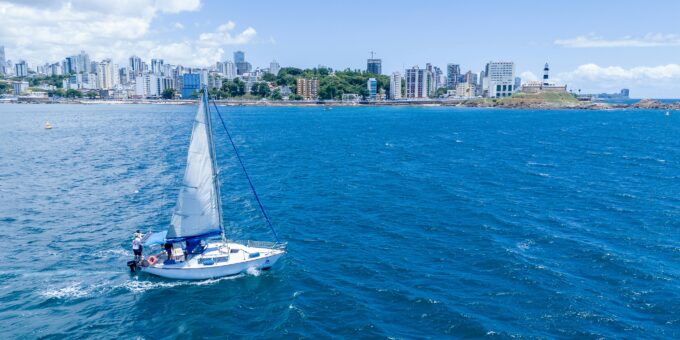
Owning a luxury yacht is the ultimate expression of freedom, but when you sail across borders, tax authorities often follow close behind. Understanding how to navigate international tax laws for luxury yacht owners can save millions in unnecessary costs. This article explores strategies, structures, and smart moves that protect both your vessel and your finances.
Understanding International Tax Laws for Luxury Yacht Owners
International tax laws for yacht owners are complex because yachts are mobile assets that frequently cross jurisdictions. A yacht may be built in Italy, registered in Malta, crewed by professionals from the UK, and operated between Monaco and the Caribbean. Each of these regions has its own tax obligations, ranging from VAT, customs duties, tonnage taxes, to import levies.
The key to minimizing tax exposure lies in where the yacht is registered, where it operates, and how it’s used. Governments often classify yachts differently depending on whether they are for private or commercial use. For instance, commercial yachts used for charter may enjoy reduced VAT, whereas private yachts are often subject to full rates.
Moreover, modern tax compliance frameworks—like the OECD’s Common Reporting Standard (CRS) and the EU’s Anti-Tax Avoidance Directives—require owners to disclose their beneficial ownership and financial details. Transparency, therefore, is as vital as tax optimization.
Why Luxury Yacht Owners Need Tax Planning
Without proper planning, yacht ownership can lead to overlapping tax burdens. Taxes can apply in the country of purchase, registration, or even where the yacht docks for a few months. Some owners face penalties simply because they lacked adequate import documents or misdeclared the vessel’s use.
Tax planning ensures compliance while optimizing benefits. Through careful structuring, owners can take advantage of temporary admission regimes, offshore registrations, or leasing models that legally reduce liabilities. In essence, smart planning transforms taxation from a burden into a manageable cost of ownership.
Types of Taxes Affecting Yacht Ownership
Luxury yacht owners encounter several types of taxes worldwide:
-
Value-Added Tax (VAT) or Goods and Services Tax (GST): Applied on purchase, import, or chartering within certain waters.
-
Import Duties: Charged when a yacht is brought permanently into a country’s customs territory.
-
Corporate or Income Tax: If the yacht generates charter income or is owned via a company.
-
Luxury and Environmental Taxes: Increasingly common, especially in countries focusing on high-net-worth individuals.
-
Wealth, Inheritance, and Property Taxes: May apply to ownership or transfer of large assets like yachts.
Each of these taxes operates independently yet interacts with others, creating a complex fiscal network.
Navigating VAT for Luxury Yachts
VAT is the single largest tax cost for yacht owners in the European Union. The standard VAT rate can range from 17% in Luxembourg to 27% in Hungary, and applies to yacht purchases, imports, or leases.
However, several VAT optimization strategies exist:
-
Malta’s VAT leasing model: allows partial VAT payments based on the yacht’s time spent in EU waters.
-
Temporary Admission Relief: allows non-EU owners to operate their yacht in EU waters for up to 18 months without paying full VAT.
-
Commercial registration: enables charter operations, which may qualify for reduced VAT rates.
For example, a yacht under the Maltese flag may pay only around 15% VAT on acquisition, significantly lower than most EU countries.
Temporary Importation Relief Explained
Temporary admission, often misunderstood, is one of the most valuable reliefs for non-EU yacht owners. Under this system, a non-EU registered yacht can enter EU waters without paying VAT, provided it remains for less than 18 months and is used privately by non-EU residents.
Owners must:
-
Keep the yacht under non-EU registration,
-
Avoid offering it for charter in the EU,
-
Exit EU waters before the 18-month limit expires.
This arrangement offers significant savings, but failure to comply results in immediate VAT assessment and penalties.
Choosing the Right Flag State
The flag under which a yacht is registered determines much of its legal and fiscal identity. Flag states set registration fees, safety standards, and in many cases, the applicable taxation regime.
Popular options include:
-
Malta – strong legal framework, favorable VAT policies.
-
Cayman Islands – tax-neutral, globally recognized.
-
Isle of Man – low tax rates, respected by insurers and lenders.
-
Marshall Islands – flexible corporate structures and privacy protections.
Each flag comes with trade-offs between cost, reputation, and administrative complexity. A poorly chosen flag can expose the yacht to higher duties or stricter reporting.
Top Tax-Friendly Yacht Registries
Here’s a quick comparison of popular jurisdictions:
| Flag State | Tax Environment | Key Benefits |
|---|---|---|
| Malta | 15% VAT on purchase, tonnage tax regime | EU compliant, respected registry |
| Cayman Islands | No direct taxes | High privacy, global recognition |
| Marshall Islands | Low operating fees | Flexible for private and commercial use |
| Isle of Man | VAT deferral schemes | Part of UK VAT system, strong legal base |
Corporate vs Private Yacht Ownership
Many yacht owners form corporations or trusts to hold their vessels. This structure offers confidentiality and potential tax advantages. However, it also introduces obligations such as corporate reporting, UBO disclosure, and potential income tax on profits.
Private ownership simplifies management but can increase exposure to inheritance, property, and wealth taxes. The ideal structure depends on the yacht’s use—whether for personal enjoyment, charter income, or mixed purposes.
Commercial Yacht Registration Benefits
Commercially registered yachts can charter legally and often pay lower VAT on fuel, supplies, and maintenance. Moreover, they can benefit from zero-rated VAT on charter income in certain jurisdictions, provided they meet operational and safety regulations.
That said, commercial registration requires compliance with SOLAS and MLC regulations, crew certifications, and stricter inspections.
You Can Also Read : How to Balance Maintenance Costs and Tax Deductions for Yachts
Leasing Structures for Yacht Tax Optimization
Leasing is another powerful tool for tax efficiency. Under leasing schemes, VAT is paid incrementally over the lease term, not upfront. This smooths out costs and, in some jurisdictions, allows proportional VAT reductions based on the yacht’s use outside VAT territories.
For instance, the Maltese leasing model calculates VAT only on the portion of the lease spent within EU waters—often reducing the effective rate to under 10%.
